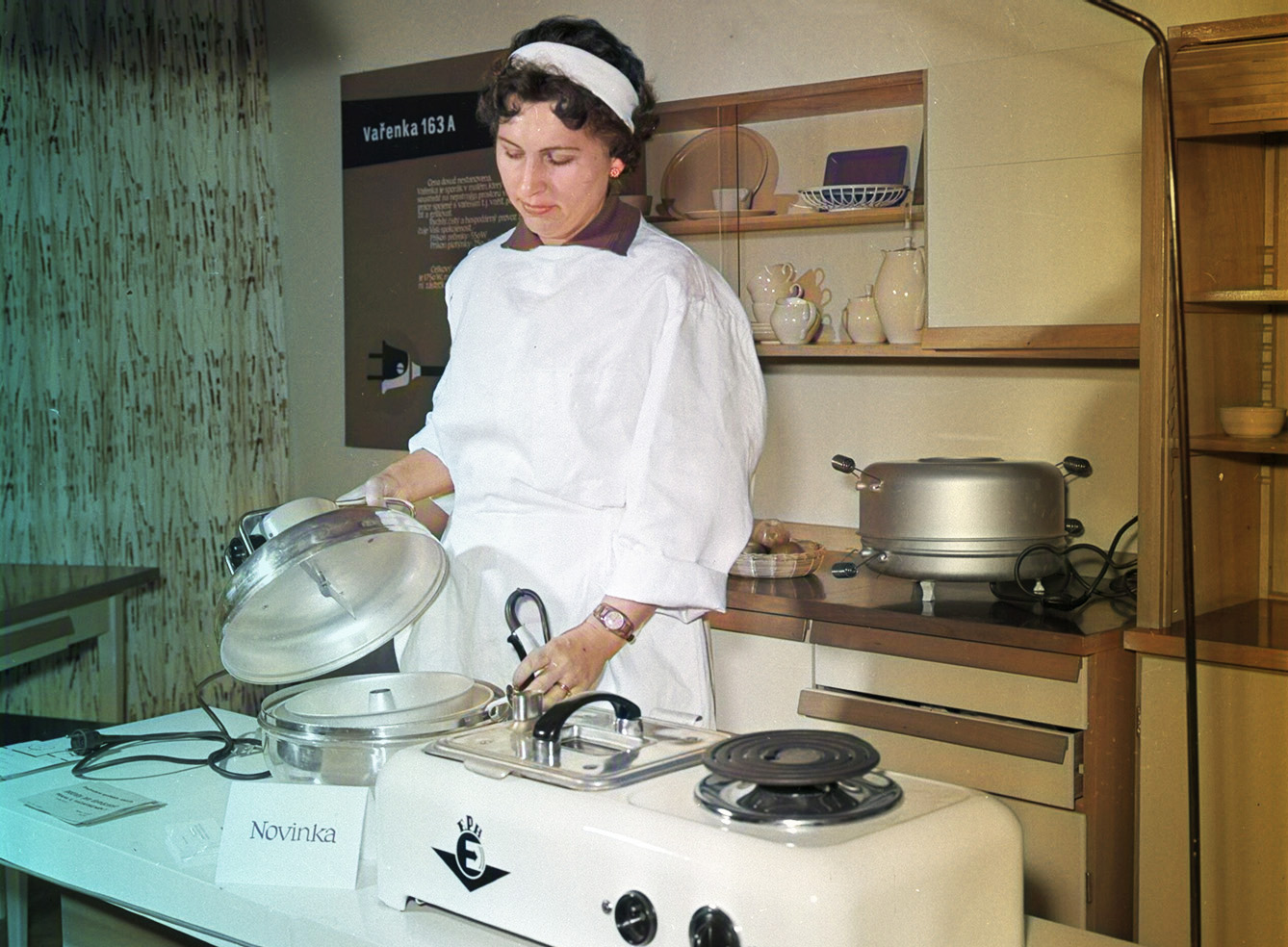What makes a kitchen appliance iconic? Usually, it’s the design or some unexpected features. But the Czech Remoska multicooker was just that, a multicooker, and a primitive one, at that. Its claim to fame is its versatility and the demand for it across the Eastern Bloc.
Remoska is as simple as it gets. It’s an aluminum bowl that sits on a stand to protect the surface from heat, fitted with an electric cover made up of a heater between two layers of metal sheets. In the center, there is a glass inspection window so cooks can keep an eye on their dishes. Its cord is removable and can conveniently also be used with old-school irons and other appliances.
Remoska: Czech invention of international fame
The invention was introduced by Czech electrical engineer Oldřich Homuta, who picked the idea during his business trip to Sweden in the 1950s. Homuta, who had been an entrepreneur with his own factory before World War II, was working at the time for the state-owned company Remos, with which his own business had merged during nationalization.
The “Remoska,” as it was named, fitted the need of the home cooks across the Eastern Bloc. It became immensely popular in its native Czechoslovakia, influencing Czech cuisine, and also became popular in Hungary. In Poland, where a copy of the Remoska is still in production, homemakers know it as a “prodiż,” a household term supposedly coined after the term prodigy.
Miraculous oven from Czechoslovakia
This “miracle oven” also gained followers in the West. It was first introduced to the UK by Lady Milena Grenfell-Baines, born in Czechoslovakia, who arrived in England during an evacuation of Jewish children in 1939. She connected the Remos factory with a business partner in Great Britain, who ordered three thousand ovens, expecting to sell them within three months. It turned out this first batch lasted only three weeks. In 2002, the popularity in the US and Canada followed.
An electric oven without temperature control might seem challenging to use but, in fact, produces excellent results. It heats quickly and does not waste energy. It also gives consistent results and keeps the food moist, as there are only three tiny holes in the lid to let excessive vapor out.
And then there’s versatility. You can use your Remoska to roast a chicken or even bake a cake. You can use it as a bread oven and even experiment with soup cooking. And, at the peak of its popularity, you could have your Remoska in three sizes, one for daily cooking, one for parties, and a miniature version for camping.
And now, in the age of over-specialized kitchen appliances, you can still mix ease with versatility and bake in a nostalgic oven.







